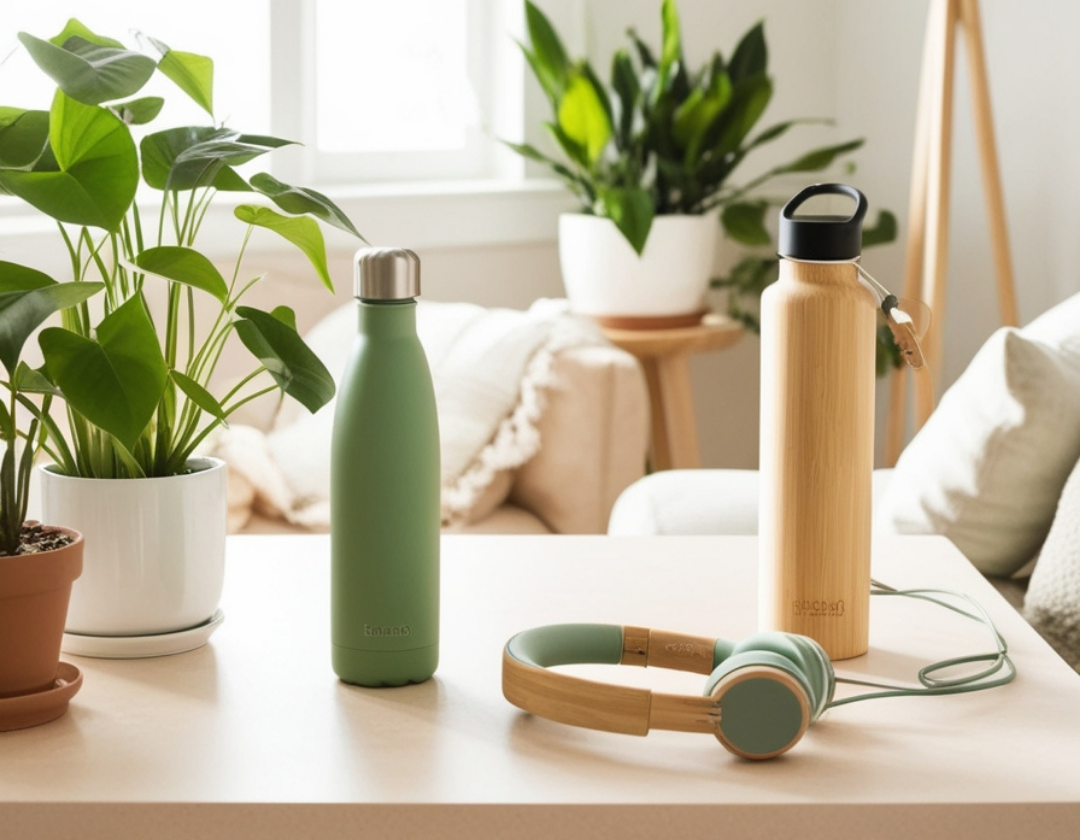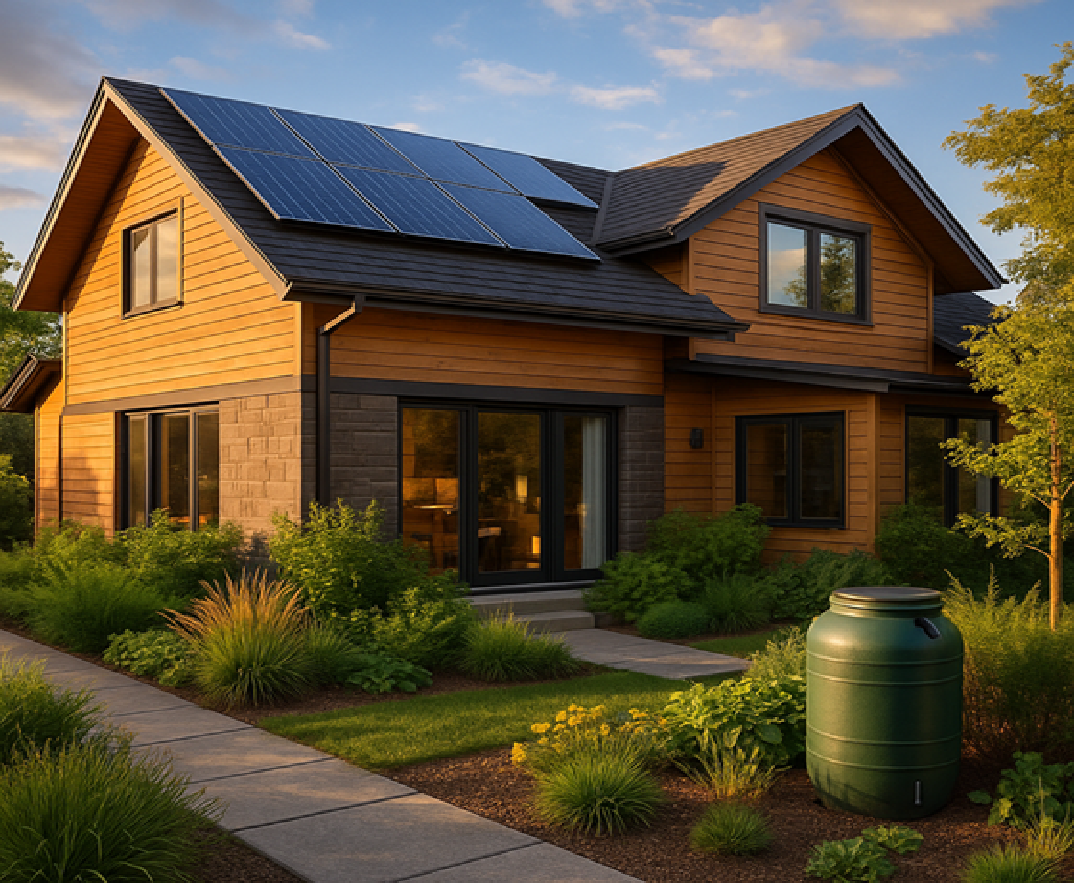Did you know that more than half of shoppers care about eco‑friendly choices and that about 80% will pay extra for sustainable goods? There’s hope for the planet! I’ve learned that small upgrades around the home and making it a bit more of a smart home, can cut energy and water waste, trim bills and shrink your carbon footprint. In this guide I’m sharing ten simple gadgets and tools that make a big difference.
- Use smart thermostats to keep rooms comfortable without wasting energy
- Swap old bulbs for LED lighting
- Control phantom loads with smart plugs
- Track your usage with an energy monitor
- Switch to WaterSense showerheads
- Automate lawn watering with smart irrigation
- Cook efficiently on induction burners
- Dry clothes with heat pump dryers
- Carry a reusable water bottle everywhere
- Add faucet aerators to every sink
Each section below digs into the problem, why it matters and how you can take action today. If you stick with me through the end you’ll see how small changes add up to a sustainable lifestyle.
Smart Thermostats
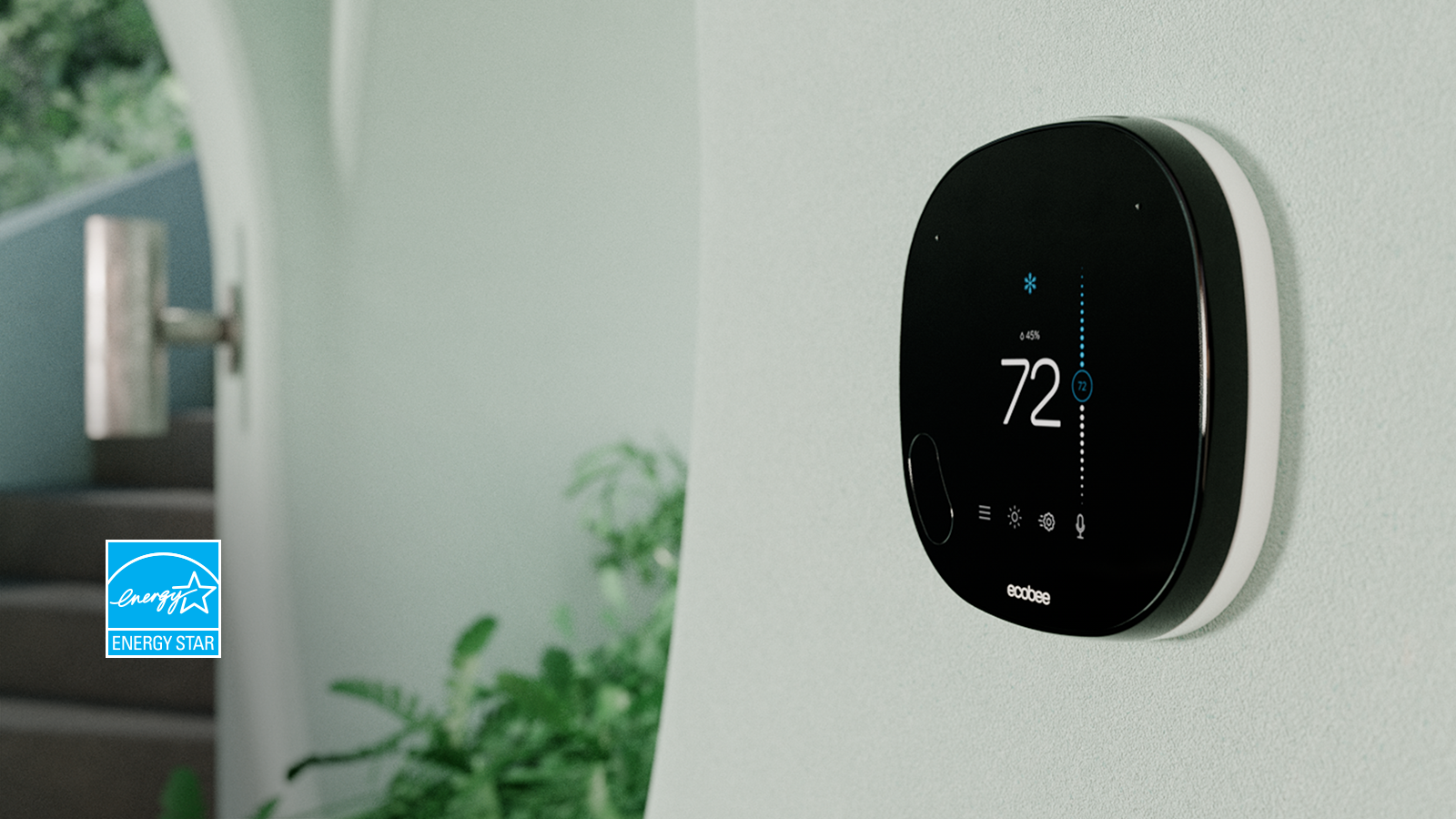
Smart thermostat illustration
Heating and cooling typically make up the biggest slice of a home’s energy use. I used to fiddle with a manual thermostat and forget to turn it down before leaving the house. The result was wasted energy and high bills. Without automation you end up heating or cooling an empty room.
A smart thermostat changes this dynamic. Devices like the Ecobee and Nest learn your schedule, sense when a room is occupied and adjust the temperature accordingly. The Roundup notes that smart thermostats can trim heating costs by 8–12% and cooling costs by 10–15%. I installed an Ecobee in my small apartment and saved about $200 in a year. With remote sensors the bedroom stays comfy at night and I can tweak settings from my phone.
If you’re still using a basic thermostat, upgrading is a simple way to reduce your carbon footprint. Look for models that support voice control and smart‑home platforms. I recommend the Ecobee SmartThermostat or Google Nest [Insert affiliate link]. Check that your HVAC system is compatible before buying, then follow the app’s step‑by‑step installation. Once installed you’ll notice a comfortable home and lower utility bills.
Energy‑Efficient LED Lighting
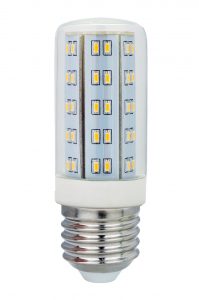
Traditional incandescent bulbs convert most of their energy into heat rather than light. I used to cringe at the thought of leaving lights on because I knew my electricity meter was spinning. Old bulbs also burn out quickly and fill landfills.
LED bulbs solve these problems. They use about 75% less electricity and last up to 25 times longer than incandescent lights. When paired with smart switches or dimmers you can reduce consumption by an additional 20–40% and save roughly $240 per year by swapping out 40 bulbs. After I replaced my entire apartment with warm LED bulbs the light quality improved and I stopped worrying about constant replacements.
To upgrade your lighting, choose ENERGY STAR rated LEDs in the same brightness and color temperature you’re used to. Brands like Philips Hue and LIFX offer app control and voice integration [Insert affiliate link]. Even basic non‑smart LEDs will slash your power bill. Start by replacing the most used bulbs in your kitchen, living room and porch. Your home will look brighter and you’ll notice a drop in energy use.
Smart Plugs and Power Strips

Many devices draw power even when turned off. Chargers, game consoles and set‑top boxes sip electricity all day. These phantom loads can add up to 5–10% of your electricity bill. I was shocked to learn how much my standby electronics cost me each month.
Smart plugs and power strips cut that waste. They let you schedule on/off times, monitor consumption and remotely control devices from your phone. By disconnecting devices when they’re not needed you can save 5–10% on your energy bill. In my home office a smart strip powers down my monitors and speakers at midnight; I’ve seen a 7% reduction in monthly usage.
Look for models from brands like TP‑Link Kasa or Belkin Wemo [Insert affiliate link]. Choose plugs that support your smart‑home ecosystem. Start by connecting your TV, computer peripherals and kitchen appliances. Use the app to set schedules, group devices and create scenes. In time you’ll notice fewer surprises on your electric bill.
Home Energy Monitors

When my power bill spiked last summer I had no clue which appliance was to blame. Without data it’s hard to know where to cut back. Many households face the same challenge, guesswork leads to frustration and wasted money.
A home energy monitor solves this by providing real‑time and historical data on your electricity use. Devices like Sense or TED install inside your electrical panel can detect the signature of each appliance. According to Palmetto, these monitors offer circuit‑level insights so you can pinpoint energy hogs. When I connected a monitor I discovered my old refrigerator was using 30% of my monthly power. Replacing it with an ENERGY STAR model cut my bill by 20%.
I really consider these devices to be gold mines, because of how much data they can provide you leading you to being able to better manage your choices of what to use and when.
To get started choose a monitor compatible with your service panel and Wi‑Fi network [Insert affiliate link]. Installation usually requires clipping sensors around the main power lines; consider hiring an electrician if you’re not comfortable with the work. Once set up you can track usage via an app, receive alerts and even compare daily patterns. The insights will guide your next upgrades and help you stay on budget.
Low‑Flow WaterSense Showerheads
WaterSense showerhead illustration
Showers make up about 17% of indoor household water use—around 40 gallons per day. Standard showerheads flow at about 2.5 gallons per minute so thousands of gallons go down the drain. Heating that water also consumes a lot of energy.
WaterSense labeled showerheads limit flow to 2.0 gallons per minute or less while maintaining strong pressure. The EPA reports that switching can save an average family 2,700 gallons of water and more than 330 kilowatt‑hours of electricity per year. If adopted nationwide, the savings could reach $2.9 billion in water bills and 260 billion gallons of water. I swapped my old showerhead for a WaterSense model and the spray still feels luxurious.
Upgrading is inexpensive and easy. Look for WaterSense certified models from High Sierra or Kohler [Insert affiliate link]. Simply unscrew your old showerhead, apply plumber’s tape and screw on the new one. You’ll instantly reduce water waste without compromising your morning routine.
Smart Irrigation Controllers
Smart irrigation controller illustration
Outdoor watering accounts for 30–50% of household water use, yet many sprinkler systems run on rigid timers regardless of weather. During rainy weeks the sprinklers still turn on and waste water.
Smart irrigation controllers use weather data and soil moisture readings to adjust watering schedules. Research from Oregon State University shows that these devices can cut irrigation water by about 20% and even up to 43% for certain turf grasses without harming lawn quality. After installing a Rachio controller my monthly water bill dropped and my lawn stayed green despite less watering.
To make the switch, choose a controller compatible with your existing valves [Insert affiliate link]. Connect it to your Wi‑Fi, input your soil type and plant types and let it download local weather forecasts. You’ll conserve water, comply with drought restrictions and enjoy a healthier landscape.
Induction Cooktops
Induction cooktop illustration
Gas and standard electric stoves waste a lot of energy by heating the air around the pan. Gas stoves also leak methane, a potent greenhouse gas, and they warm up your kitchen, which makes your air conditioner work harder.
Induction cooktops use electromagnetic fields to heat pots directly. They’re about 15% more efficient than conventional electric cooktops and nearly three times more efficient than gas. When I switched to a portable induction burner water boiled in under two minutes and my kitchen stayed cooler during summer. Induction is also safer because there are no open flames.
To adopt this technology you don’t need to remodel your kitchen. Start with a single induction hot plate to see how you like it [Insert affiliate link]. Make sure your cookware is magnetic—cast iron and most stainless steel works fine. If you like the experience consider a full cooktop. You’ll enjoy precise temperature control, faster cooking and lower energy costs.
Heat Pump Dryers
Heat pump dryer illustration
Clothes dryers are among the top energy users in a home. Traditional vented models heat air and blow it outside, wasting energy and requiring high wattage. In small apartments venting can also be a problem.
Heat pump dryers recirculate warm air instead of venting it. Energy Star notes that they use at least 28% less energy than conventional dryers. They run at lower temperatures, which is gentler on fabrics. When I replaced my old dryer with a heat pump model my laundry room stayed cooler and my electric bill shrank.
Look for Energy Star certified heat pump dryers from brands like LG or Bosch [Insert affiliate link]. Although they cost more upfront, the long‑term savings and convenience (no external vent required) make them a smart investment. Install one on its own circuit and clean the filters regularly for optimum performance.
Reusable Water Bottles
Reusable water bottles illustration
Americans buy around 50 billion plastic water bottles each year. That’s about 13 bottles per person per month and most of them are not recycled. Disposable bottles cost money and create mountains of waste.
Switching to a reusable bottle is a simple way to reduce plastic and save cash. Using a refillable bottle can prevent about 156 disposable bottles per person annually, which saves roughly 1.5 kilograms of plastic and prevents 120 bottles from becoming waste. The same source notes that the average cost of bottled water is about $1.98 per bottle, so switching could save you over $300 a year.
Choose a durable stainless steel or glass bottle that suits your style [Insert affiliate link]. Look for insulation if you like cold drinks. Carry it everywhere—work, gym, grocery store. Many public places now offer free water refill stations. This small habit promotes zero waste shopping and eco‑friendly habits while saving you money.
WaterSense Faucet Aerators
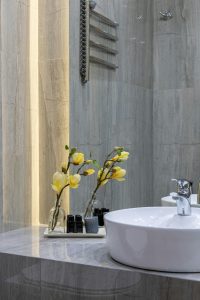
Bathroom and kitchen faucets can pour out more water than you need. The typical faucet flows at about 2.2 gallons per minute, and much of that water goes straight down the drain. If the water is hot you’re also wasting the energy used to heat it.
WaterSense certified faucets and aerators reduce flow to 1.5 gallons per minute while maintaining good pressure. According to the EPA this can save an average family 700 gallons of water each year and, if adopted nationally, would save 71 billion gallons of water and $1.6 billion in utility bills. When I installed aerators in my bathroom sinks I didn’t notice a drop in performance but my water usage dropped.
Installing an aerator is one of the easiest home upgrades. Purchase a WaterSense labeled aerator for a couple of dollars [Insert affiliate link], unscrew the old aerator, clean the threads and screw on the new one. Check the packaging to ensure the flow rate meets WaterSense standards. You’ll conserve water and reduce the energy needed to heat it.
Why This Matters
Energy and water are precious resources. The average U.S. household uses about 10,632 kilowatt‑hours of electricity per year. Cooling accounts for roughly 19% of home energy use while heating and water heating each contribute around 12%. Most of this energy still comes from fossil fuels, so wasted watts translate into greenhouse gases.
On the water side, Americans consume more than 300 billion gallons of water every day. Showers and outdoor irrigation are major drivers, each representing a large share of residential consumption. When you heat water only to let it run down the drain you waste both water and electricity. Meanwhile droughts are becoming more common and utilities are raising rates.
That’s why the gadgets described in this article matter. Smart thermostats and LED lighting reduce the biggest chunk of energy use in your home. Smart plugs tackle phantom loads. Energy monitors reveal hidden hogs so you can replace or unplug them. Low‑flow showerheads and aerators cut water waste without sacrificing comfort. Smart irrigation controllers ensure your landscape only drinks when it needs to. Induction cooktops and heat pump dryers offer modern alternatives that slash electricity consumption. Reusable water bottles eliminate single‑use plastics and reduce embodied energy in manufacturing.
The broader context is encouraging: a Shopify survey found that 64% of consumers prioritize sustainability and 80% are willing to pay a premium for eco‑friendly product. Real estate research shows that 82% of homebuyers consider heating and cooling costs when purchasing a house. People care about living sustainably on a budget, and the ideas here align with free eco‑friendly shopping and zero waste shopping habits. By adopting these devices you not only save money but also join a movement to live green, reduce emissions and support ethical brands.
Common Mistakes to Avoid
Forgetting Compatibility
Before buying a smart device check that it works with your existing wiring, Wi‑Fi network and voice assistant. Some thermostats require a C‑wire and certain plugs only support 2.4 GHz networks. Read the specifications to avoid frustration.
Not Using Schedules
Many people install smart plugs or thermostats but never set up schedules. Without routines your devices sit idle. Take time to program schedules or scenes that match your daily habits. Automation is where the real savings happen.
Neglecting Updates
Outdated firmware can introduce security risks and bugs. Make sure to update your smart gadgets through their apps. Use strong passwords and enable two‑factor authentication when available.
Ignoring Data
If you install an energy monitor but never look at the data you won’t learn which appliances waste the most power. Set aside time each month to review usage patterns and adjust your habits accordingly.
Buying Too Much
It’s tempting to buy every new gadget on the market. Start with one or two devices that address your biggest energy or water burdens. Evaluate the results before investing further. Mindful shopping prevents wasted money and unused devices.
Conclusion
Eco‑friendly smart home gadgets offer a practical path toward living sustainably on a budget. By addressing the largest sources of energy and water waste you can reduce your bills and your environmental impact. I’ve experienced these benefits firsthand and hope my story inspires you to act.
You don’t need to overhaul your house overnight. Start with one change, like installing a WaterSense showerhead or replacing your most used light bulbs. As you see savings you’ll be motivated to adopt more devices. Each small step contributes to a greener home and a healthier planet.
Ready to get started? Subscribe to our newsletter for more tips on sustainable living at home and check out the recommended products linked throughout this article. When you shop through our links you support our work at no extra cost to you. Together we can save money and live green.
Frequently Asked Questions
Are smart home gadgets expensive?
Prices vary. Basic smart plugs cost less than a night at the movies while smart thermostats and heat pump dryers cost more. The good news is that energy savings often pay back the investment within a few years.
Do I need professional installation?
Most gadgets are plug‑and‑play. Thermostats and energy monitors may require wiring; if you’re uncomfortable with electrical work hire a licensed electrician. Showerheads and aerators simply screw on.
What is a WaterSense label?
WaterSense is an EPA program that certifies fixtures using at least 20% less water than standard models while performing as well. Look for the WaterSense logo on showerheads, faucets and toilets to ensure efficiency.
How do I choose the right smart thermostat?
Consider your HVAC type (central, heat pump, boiler), the need for a C‑wire, compatibility with voice assistants and the features you value. Some thermostats offer remote sensors, learning algorithms or touch screens.


